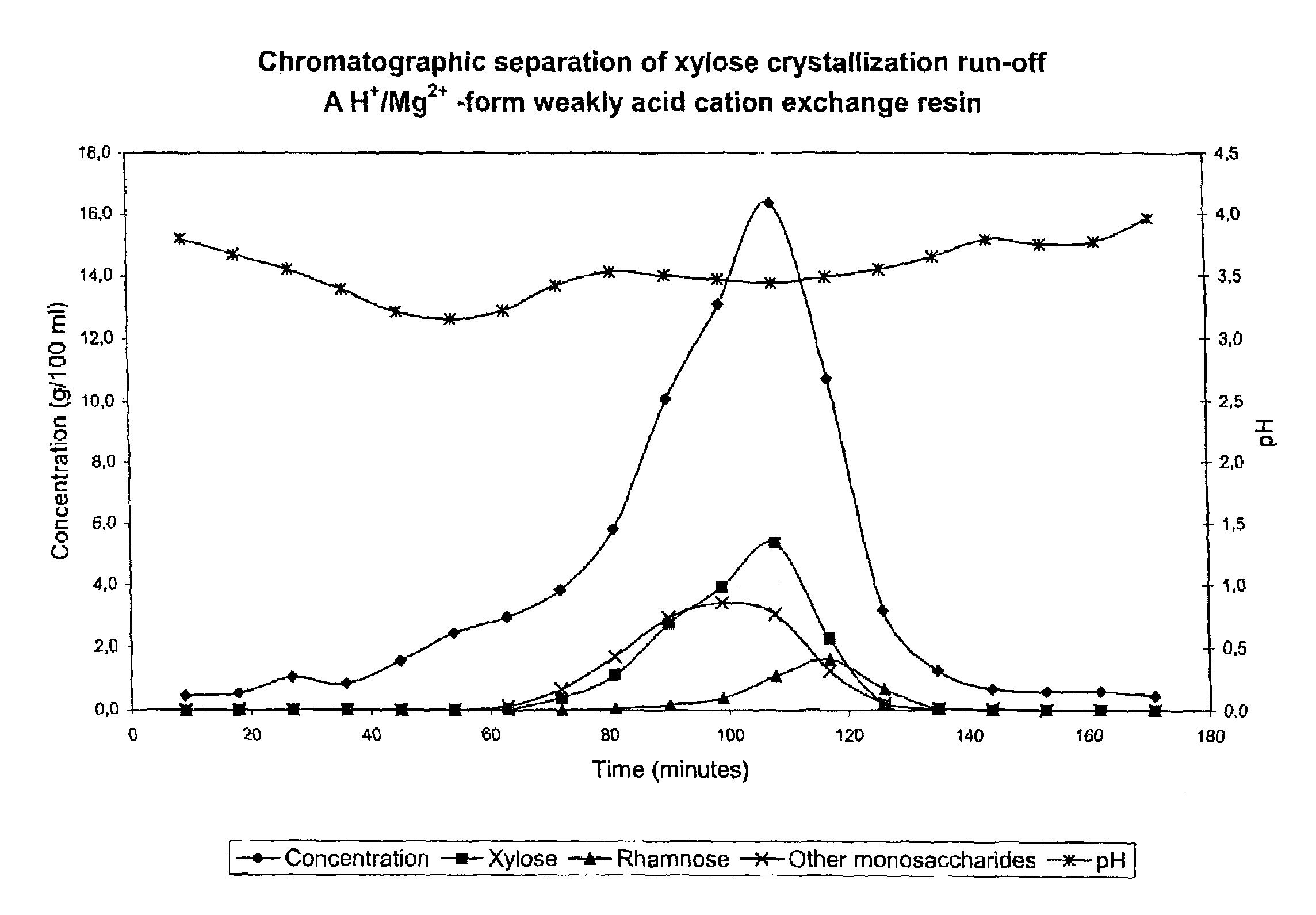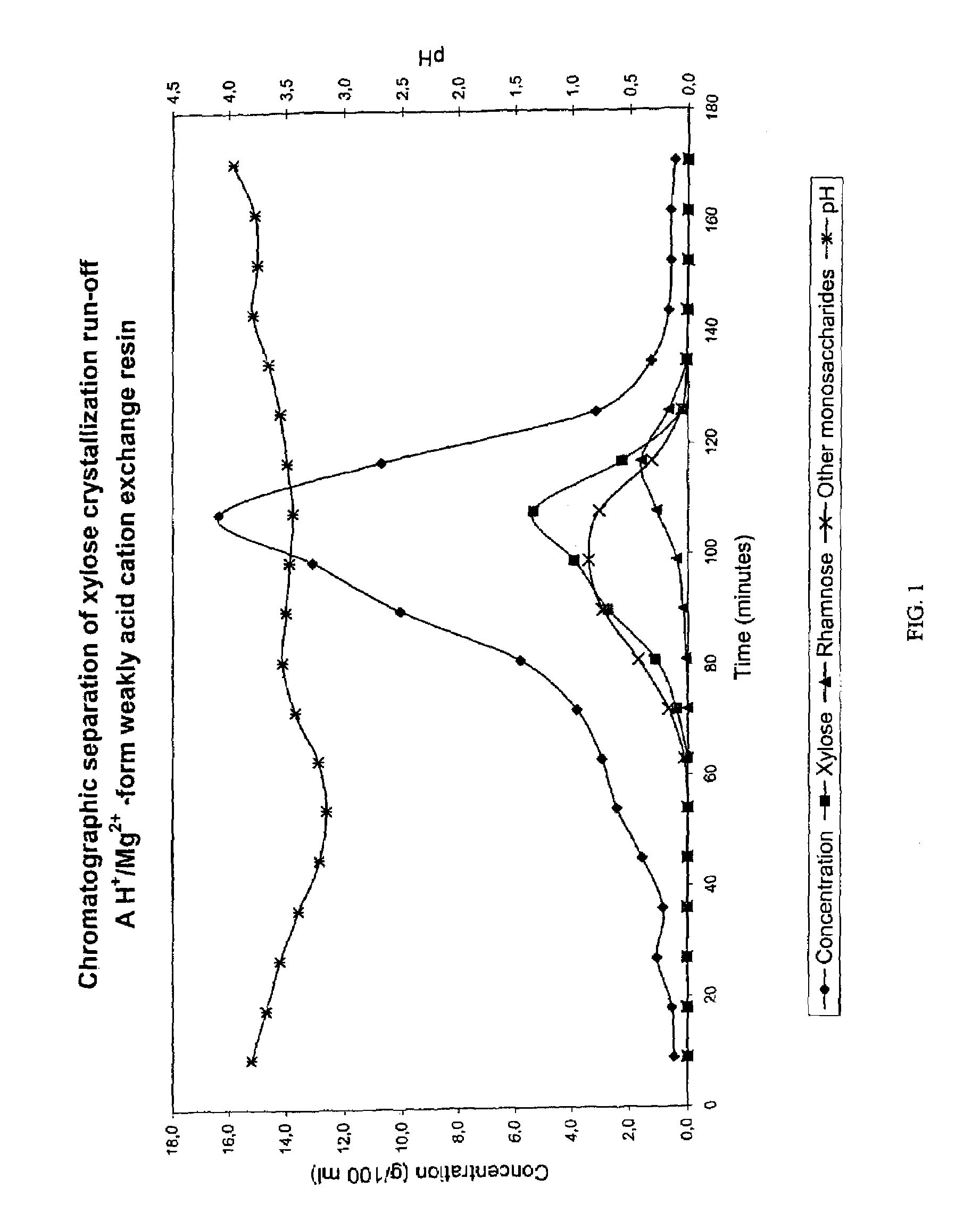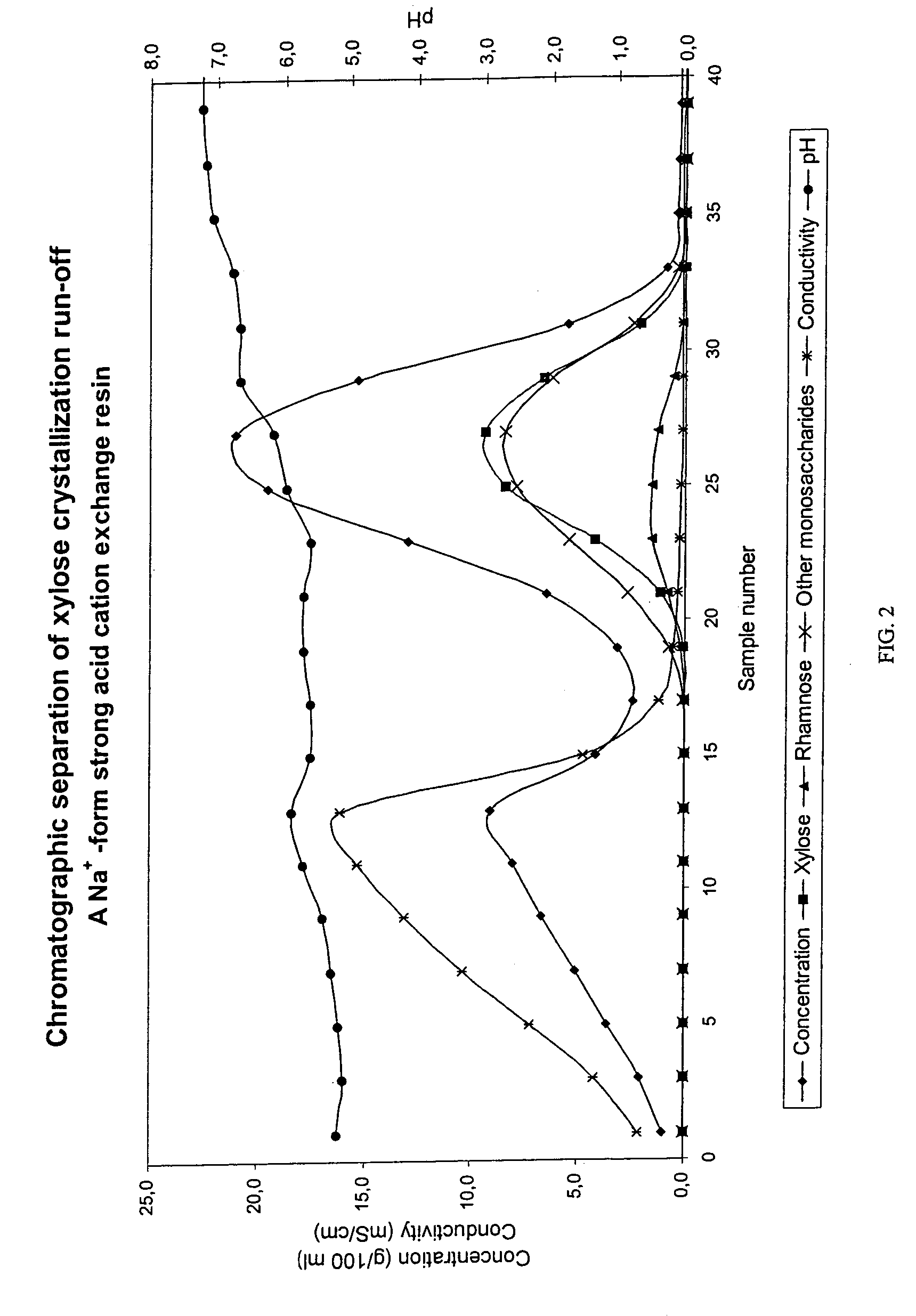Separation of sugars, sugar alcohols, carbohydrates and mixtures thereof
a technology applied in the field of separation of sugar alcohol and sugar alcohol from each other, can solve the problems of not being able to separate sugars from each other, unable to detect researchers have often detected significant losses of neutral sugars, so as to achieve less complicated chromatographic separation process and economic benefits.
- Summary
- Abstract
- Description
- Claims
- Application Information
AI Technical Summary
Benefits of technology
Problems solved by technology
Method used
Image
Examples
example 1
Chromatographic Separation of Xylose Crystallization Run-off with an H+ / Mg2+ Form Weakly Acid Cation Exchange Resin
[0063]Xylose crystallization run-off from a / the xylose production process based on Mg-si-spent liquor (beech wood) was subjected to a chromatographic separation. The separation was performed in a chromatographic separation column as a batch process. The equipment consisted of feed and eluant water containers having a heat jacket, a chromatographic separation column, pipelines for input of feed solution as well as eluant water pipelines, a pump and a sample collector for outflow. The column with a diameter of 0.045 m was filled with an acrylic weakly acid cation exchange resin (Finex CA 12 GC) manufactured by Finex Ltd., Finland. The resin was an ethyl-acrylate-based resin. The height of the resin bed was about 0.70 m. The cross-linkage degree of the resin was 6.0% DVB and the average particle size of the resin was 0.26 mm. The resin was regenerated into mainly H+ form (...
example 2
Chromatographic Separation of Xylose Crystallization Run-off with a Na+-Form Strong Acid Cation Exchange Resin
[0069]Xylose crystallization run-off from a / the xylose production process based on Ca-si-spent liquor (birch wood) was subjected to a chromatographic separation in a batch separation column. The separation was performed in a pilot scale chromatographic separation column as a batch process.
[0070]The equipment consisted of a feed tank, a feed pump, a heat exchanger, a chromatographic separation column, product containers, pipelines for input of feed solution as well as eluant water, pipelines for output and flow control for the outcoming liquid.
[0071]The column with a diameter of 0.225 m was filled with a strong cation exchange resin (manufactured by Finex Ltd, Finland). The height of the resin bed was approximately 5.1 m. The degree of cross-linkage was 5.5% DVB and the average particle size of the resin was 0.41 mm. The resin was regenerated into sodium (Na+) form and a feed...
example 3
Chromatographic Separation of Rhamnose and Arabinose Containing Xylose Fraction with Weakly Acid Cation Exchange Resin
[0079]Xylose fraction prepared according to Example 2 (containing xylose, rhamnose, arabinose and other monosaccharides) was subjected to a chromatographic separation in a batch separation column. The separation was performed in a pilot scale chromatographic separation column as a batch process.
[0080]The equipment consisted of a feed tank, a feed pump, a heat exchanger, a chromatographic separation column, product containers, pipelines for input of feed solution as well as eluant water, pipelines for output and flow control for the outcoming liquid.
[0081]The column with a diameter of 1.0 m was filled with a weakly acid cation exchange resin (Finex CA 16 GC) manufactured by Finex Ltd, Finland. The resin was methyl-acrylate-based resin. The height of the resin bed was approximately 5.0 m. The degree of cross-linkage was 8 w-% DVB and the average particle size of the r...
PUM
| Property | Measurement | Unit |
|---|---|---|
| particle size | aaaaa | aaaaa |
| particle size | aaaaa | aaaaa |
| temperature | aaaaa | aaaaa |
Abstract
Description
Claims
Application Information
 Login to View More
Login to View More - R&D
- Intellectual Property
- Life Sciences
- Materials
- Tech Scout
- Unparalleled Data Quality
- Higher Quality Content
- 60% Fewer Hallucinations
Browse by: Latest US Patents, China's latest patents, Technical Efficacy Thesaurus, Application Domain, Technology Topic, Popular Technical Reports.
© 2025 PatSnap. All rights reserved.Legal|Privacy policy|Modern Slavery Act Transparency Statement|Sitemap|About US| Contact US: help@patsnap.com



